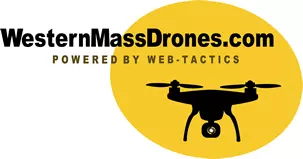The City of Easthampton hired Web-tactics, MA to conduct a drone inspection on two of the city's water tanks. When you have your tank regularly inspected, small issues can be identified and addressed before they become huge problems, saving money in the long term.
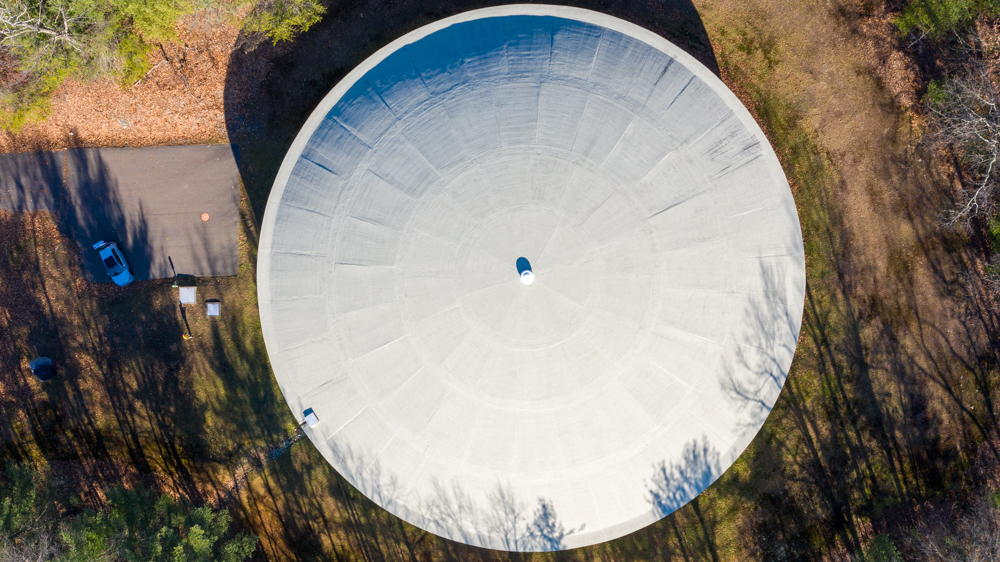
Why Should Water Tanks Be Inspected Often?
With safe water the number one purpose for a water tank, proper tank inspection can verify the condition of vents, overflows, access points, and ancillary equipment. Tanks should be inspected every year at a minimum to ensure proper performance and longevity. If adverse weather events have occurred and the tank has endured more abuse than usual, it's good to have it inspected more frequently. Climate has much to do with how often the tank is inspected. Bats, bugs, and other critters are among the hazards to water tanks, the source of many people's drinking water in Easthampton. If you don't inspect these tanks, problems can occur, and people can get sick.
We utilized one of our smaller drones, a DJI Mavic 2 Pro, because of the tight line of trees surrounding each water tank, to perform the aerial exterior water tank inspections, looking for potential sanitary defects or flaws. Our drones' inspections provide a thorough analysis of the exterior of the water tank and the reservoir as some issues are not evident from the ground. Because of a drone's ability to view surfaces and structures from all angles, it allows for superior imaging and the capacity to provide a close-up of regions not possible to view by the human eye.
Holes caused by weather or rust can allow animals, insects, and bird droppings to enter the water tank. Some hatches on the top of water tanks don't have locks or are not locked correctly, allowing people to climb up and in. If trespassers don't close the hatch door when they leave, serious problems can result. Vents with screens can come loose, get blown out by wind or bend when freezing and thawing occurs.
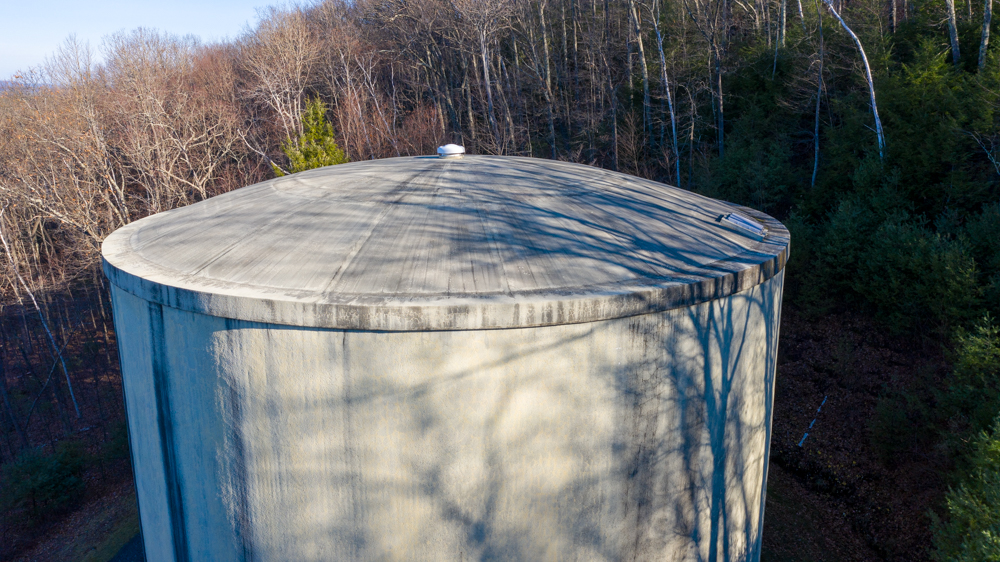
The tanks were inspected from top to bottom using both video and photographic documentation - this eliminates the need for personnel to climb the tank. The two tanks were in remote, wooded areas in Easthampton. Anytime we're flying in a remote location, it's essential to be prepared for anything – even running into wildlife coming out of the woods, like during Black Bear season. Our pilots carry legal bear spray, which they always keep on their person. Not only will this protect them from animals, but in the event of an unwelcomed human interaction – this spray works from 30 feet away – giving the pilot time to get to their vehicle in the event of an emergency. Where there is a water tank, there is water, so dress for a very wet and muddy drone shoot. The damp and muddy ground surrounding the water tanks gets slippery, so you must pay close attention to your footing as you fly your drone around the tank, to ensure that you don't slip and fall.
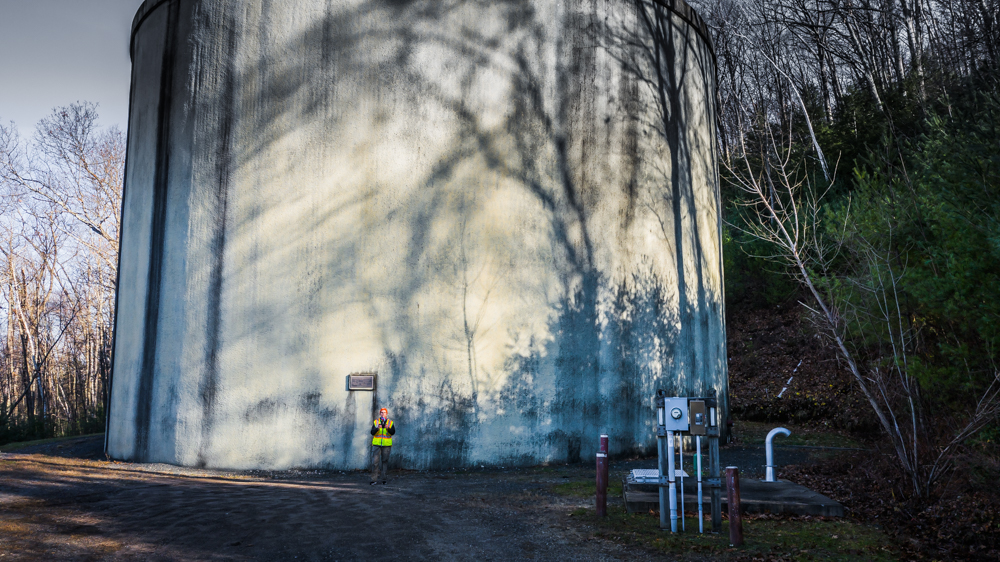
Before flying, the pilot must walk entirely around the entire tank to look for possible obstructions such as trees, wires, and powerlines. We also do a full pre-flight and post-flight inspection of our drones before and after every flight. It's essential to check all settings, check over aircraft props, gimbal, 'Return to Home' height home point. Everything. Safety first.
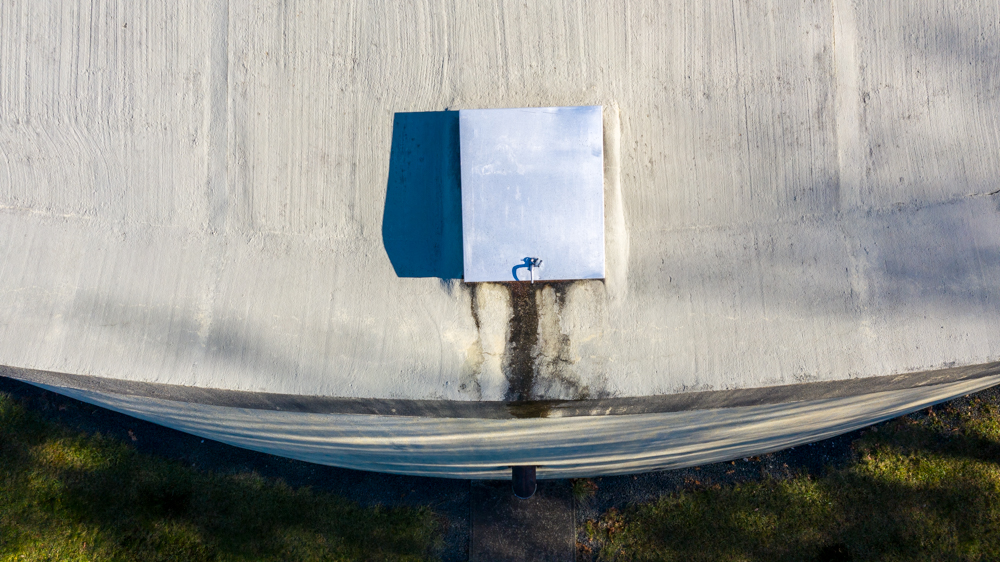
Physical inspection of the aircraft -
-
Check battery firmly attached
-
Check Mavic battery level by pressing the button on battery
-
Check RC battery level
-
Check props for damage
-
Check props for tightness
-
Check for cracks in arms/joints
-
Check gimbal
-
Check ND filter
-
Check sensors for dirt *
Check general settings page in DJI Go 4 app -
-
Check Mavic battery level in the app
-
Check for warnings on startup
-
Check WB
-
Check video resolution *
-
Check frame rate
-
Check shutter speed
-
Check photo size *
-
Format SD card if necessary *
-
Check Home Point on the map
-
Check RTH altitude *
-
Check loss of signal action (hover, RTH etc.) *
- = Usually only done before first flight
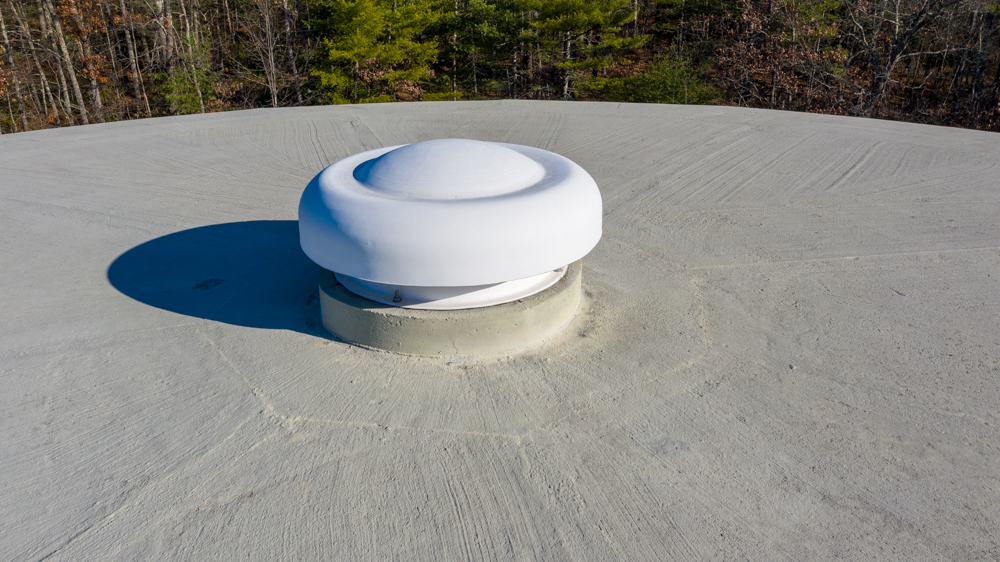
After the drone is off the ground, the pilot puts the drone into Tripod Mode, for a slow and safe flight. The pilot sets weight points when the drone is at the top of the tank to set a flight radius, this way, the drone can fly in a perfect circle around the water tank, which it does at three different heights to get several angles. While taking footage, the pilot looks for any possible sanitary defects or problems like lack of a lock, whether the lock was secure or whether the hatch had a good seal.

